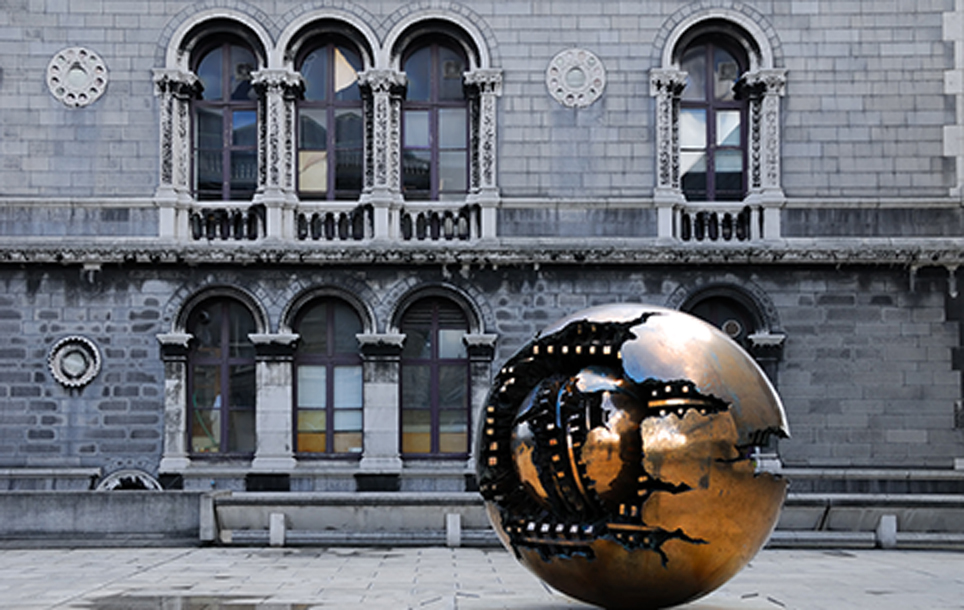Understanding Risk
In our new series, we take a deep dive into the terminology surrounding investing. In our first article, Cantor Fitzgerald Ireland's Business Development Associate, James Stafford, takes a look at risk and what is really means for the investor.
Despite 69% of Irish workers having an occupational pension, only 11% currently hold a personal pension, according to the Central Statistics Office. In a volatile global economy, could one reason for this be a fear of risk?
If so, perhaps it’s not risk itself that causes hesitation, but rather a lack of understanding around what risk really means. When it comes to investing, risk isn’t something to avoid, it’s a core element of how capital grows. Managing risk is less about steering clear of it entirely and more about understanding it deeply, then aligning it with your financial goals, lifestyle, and legacy plans.
Put simply, risk is the possibility that your investment return may differ from what you expect, sometimes positively, sometimes negatively. Every investment carries a degree of uncertainty. But rather than viewing risk as something negative, it can be more helpful to see it as the price we pay for the opportunity to achieve meaningful long-term returns. When managed thoughtfully, risk becomes a tool, not a threat.
A cornerstone of sound investment strategy is understanding the risk/reward trade-off. The potential for higher returns usually comes with increased volatility or uncertainty. For example, government bonds may offer steady, low returns with minimal risk of loss, while private equity investments can deliver significantly higher upside, but with a higher potential downside. The key is finding the right blend of investments for your unique circumstances, time horizon, and comfort with market movement.
What are the levels of risk associated with investments?
- Very Low Risk: Cash deposits and short-term money market funds. These aim to preserve capital with minimal exposure to market fluctuations.
- Low Risk: Includes short-duration bonds and highly diversified conservative portfolios. Suitable for preserving wealth while generating modest returns.
- Medium Risk: A balanced mix of asset classes, structured products, investment-grade corporate bonds, and diversified equity portfolios. Offers potential for reasonable growth with moderate volatility.
- High Risk: Includes emerging market equities, geared property investments, and some alternative strategies. These can provide higher potential returns but demand a longer time horizon and greater emotional resilience.
- Very High Risk: Venture capital, private equity, and speculative equities. These are suited to experienced investors willing to tolerate significant fluctuations in pursuit of substantial long-term gains.
Time is one of the most powerful risk management tools available. Longer investment horizons allow you to take on more volatility, with the understanding that market cycles tend to smooth out over time. For many high-net-worth investors, this long view offers the freedom to be strategic rather than reactive. Conversely, short-term goals, such as liquidity needs or planned withdrawals, may call for a more conservative approach.
Equally important is your Attitude to Risk (ATR), a personal measure that goes beyond balance sheets. Some investors are comfortable with short-term market dips in exchange for long-term growth; others prioritise capital preservation. At Cantor Fitzgerald Ireland, we work with clients to ensure their investments align with their personal risk tolerance. Part of this involves agreeing on a clear five-point risk spectrum to help guide investment decisions, Very Cautious, Cautious, Considered, Considered Risk-Taking, Risk-Taking.
Clients determine their attitude to risk, a highly personal decision influenced by many factors. This framework enables more tailored portfolio design, matching each investment strategy to the individual behind the capital.
At the end of the day, managing risk isn’t about eliminating uncertainty, it’s about embracing the right kind of uncertainty. With clarity around your goals, a well-understood time horizon, and a clear sense of your comfort with market fluctuations, risk becomes something you can harness.
Get in touch to find out how our discretionary strategies can help you build enduring wealth.
Written by James Stafford, Business Development Associate, Cantor Fitzgerald Ireland
This Is A Marketing Communication



 JAMES STAFFORD
JAMES STAFFORD